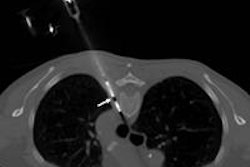
An updated set of quality assurance guidelines (änderung der Qualitätssicherungsrichtlinie, QS-RL) took effect in Germany on 4 November 2014. Significantly, these guidelines now make reference to the new standard on acceptance and consistency testing of image display systems (DIN 6868, part 157).
The following changes have occurred as a result of this fresh approach:
The standard no longer applies to CRT monitors.
 Dr. Georg Stamm is head of experimental radiology and radiation protection in the Institute for Diagnostic and Interventional Radiology at Hannover Medical School.
Dr. Georg Stamm is head of experimental radiology and radiation protection in the Institute for Diagnostic and Interventional Radiology at Hannover Medical School.The existing diagnostic categories A and B will cease to apply. Instead, room categories will be defined on the basis of their uses, and will distinguish between diagnostic and viewing quality (see table below).
Daily visual consistency testing should be carried out using test image TG18-OIQ. The interval for metrology tests has changed from quarterly to half yearly.
A total of 12 new test images will be used in accordance with DIN EN 62563-1:2014-01 and AAPM TG18. These are available for download at www.nar.din.de.
Room categories should also be used for monitors and C-arms first used before 1 May 2015. However, transitional periods apply until 1 January 2025.
Acceptance testing of mobile systems such as C-arms and mobile computers must be carried out in accordance with the room category with the highest illumination.
The minimum matrix size for monitors is now 1,600 x 1,200 pixels, or 1,024 x 1,024 for CT and fluoroscopy. Devices first used on or before 30 June 2018 may still be acceptance-tested in accordance with DIN 6868-157 using a 1,024 x 1,024-pixel matrix. This transitional period ends on 1 January 2025.
Additional minimum requirements apply to mammography, as specified in table five of DIN 6868-157. For example, the matrix size is 2,048 x 2,048 pixels.
The person responsible for radiological protection defines the room category and labels diagnostic monitors depending on their intended use (e.g., CT diagnosis or mammography).
Acceptance testing is no longer required for viewing-quality monitors. However, a visual inspection should be carried out before the device is first used, and repeated at the user's discretion.
| Room category | Room | Activity | Illumination |
| 1 | Diagnostic | Diagnostic radiography and tomography | < 50 lx |
| 2 | Examination with immediate diagnosis | Making therapy decisions (typically for low-contrast objects, angiography, cardiac catheterization) | < 100 lx |
| 3 | Examinations | Typically for high-contrast objects (e.g., operating room [OR]) | < 500 lx |
| 4 | Viewing | Known diagnosis carried out repeatedly (e.g., repositioning in OR) | < 1,000 lx |
| 5 | Dental diagnosis | < 100 lx | |
| 6 | Dental treatment | In lighting conditions of treatment locations | < 1,000 lx |
In the table, displays used to view medical images or make therapy-related decisions such as medication or surgery are not covered by these categories. These include ward-round trolleys and monitors used to show images to the patient.
Editor's note: This is an edited version of a translation of an article published online on 12 December 2014 in German by the German Radiology Society (DRG). Translation by Syntacta Translation & Interpreting.
Dr. Georg Stamm is head of experimental radiology and radiation protection in the Institute for Diagnostic and Interventional Radiology at Hannover Medical School.



















